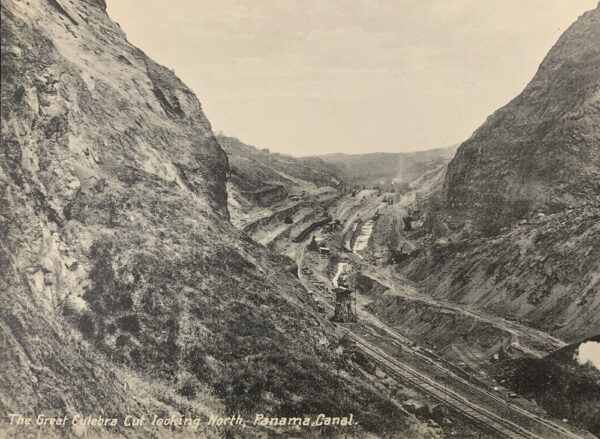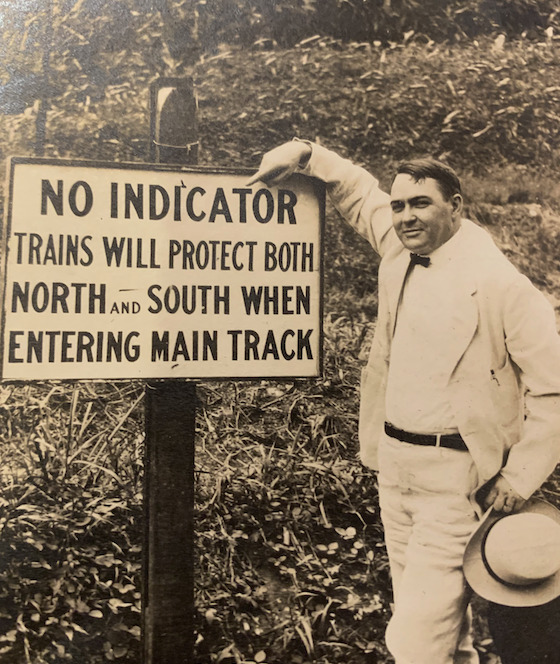The Culebra Cut

This is a morning with a touch of frantic family activity. We will have guests from both sides to show off the new digs to the kids who will have to clear things out when we are done with what we laughingly term “the Last Place.” The are grandchildren who will be accommodated under sunny skies with seasonal temperatures. In order to convey our helath and general well-being, we are cleaning up the stuff that we moved from the unit upstairs to the one on the first florr.
That involved some of the old work that is not quite complete. For example, the image above is from a set of twenty or thirty images our Grandfather collected in 1913 when he was helping The Phone Company complete the greatest construction effort in human history. At least the greatest one up to 110 years ago. A decent job of research would fill in the blanks on the net level of effort in the project- $350 Million back then. The glimpse at the Culebra Cut, the single most challenging component of that century’s Big Dig, shows you the scale of the effort.
There were other parts, of course. The French had tried to blow a sea-level canal through the sharp line of hills between the two great oceans. Due to the amount of dirt and rock involved and the diseases like Yellow Fever, they failed.
One of us made a point of visiting the venerable club where our connection to history occurred. Grandfather approached legendary Lieutenant Colonel George Goethals, third Chief Engineer of the Canal Project. He was innocently having lunch in a great wood-paneled hall with brilliant white linen covering the tables. Grandfather introduced himself as a functionary of the Bell System. He quickly advanced a plan to replace the communications system that would make the Canal a truly modern operating system. The key to it was to replace the nautical semaphore flag-crew who would raise flags to signal flooding and draining of the massive locks. Goethals arrived at a decision over his entree, and Grandfather was tasked to incorporate the telephone into the final design of the canal. No flags required.
The sea-level Canal could not be achieved. There was too much rock and too much height required. Instead, Goethals was determined to execute a plan with two artificial lakes as the key parts of the canal. The Gatun and Miraflores Lakes were created with four dams penetrated by massive “locks” of concrete and steel connecting them. Synchronizing the opening and closing of the gates between the lakes required teams of sailors who communicated in appropriate nautical fashion by raising and lowering pennants visible to the control tower. Grandfather proposed a means of communication that did not require fabric, ropes and pullies. Instead, they would be operated by instructions passed by telephone. Bell Telephones.
We passed the pictures around on the patio of the new unit. Holding the papers that our Grandfather collected more than a century ago to maintain his memory of the challenge was pretty cool. Wish he had lived long enough for us to have met him. Luncheons might have been a little livelier than usual. Maybe we can do something about that today!

(Grandfather wanted his time with the message this sign preserved for history. As you can see, even a few words can have historic significance! Photo 1913 Socotra).
Copyright 2023 Vic Socotra
www.vicsocotra.com
